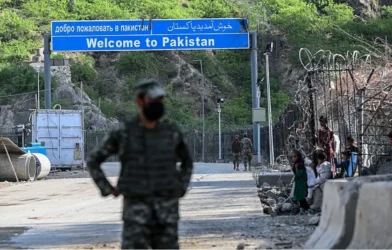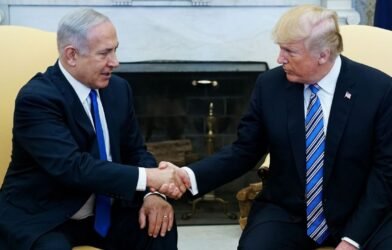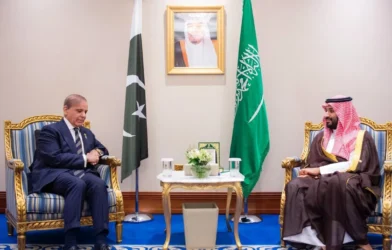Subtotal $0.00
In recent years, India has undergone a qualitative transformation in the military industry and has developed ambitious plans to enhance its defense capabilities, following a strategic approach aimed at achieving self-sufficiency and reducing dependence on defense imports.
These efforts are part of the Indian government's "Make in India" initiative, which seeks to make the country a global defense manufacturing hub to meet its security needs and expand its share of the arms export market.
This has translated into huge investments in research and development, partnerships with major international companies, and incentivizing local companies to enter this vital sector.
The results of these efforts have been the production of advanced military equipment, including indigenous fighters such as the Tejas, submarines, armored vehicles, long-range missiles, and advanced defense systems.
Pakistan and China are watching
India's rapid rise in military industrialization has not gone unnoticed by regional concerns, especially in Pakistan, which views these developments as a direct threat to the strategic balance in South Asia.
Islamabad fears that India's technological and military superiority will lead to an imbalance in the traditional balance of power, imposing additional challenges on it at the security and economic levels, which is why it has intensified its military cooperation with its allies, especially China and Turkey, to enhance its defense capabilities and modernize its weapons system.
China, which has a complex relationship with India that ranges from cooperation to competition, is watching India's rise closely, especially as border tensions between the two countries escalate.
Strengthening India's military capabilities would complicate Beijing's strategic calculations in the region, especially in light of the growing defense cooperation between India and the United States, which aims to counter Chinese influence in the Indo-Pacific region.
In light of these developments, the most important question remains: To what extent can this Indian strategy affect the military balance in South Asia? Will it lead to an accelerated arms race between regional powers, or will it contribute to creating a system of mutual deterrence that will prevent the outbreak of future conflicts?
Indian Military Doctrine
India has historically relied on arms imports, especially from the Soviet Union, which supplied more than 70% of its defense equipment by the 1980s.
But wars with China and Pakistan, especially the 1999 Kargil War, revealed serious vulnerabilities, prompting India to restructure its strategy and defense industries and evolve its combat doctrine from a defensive to a more offensive approach.
This was encouraged by escalating military and strategic competition with Pakistan and China, and rapid technological advances, under the Cold Start Doctrine, a military strategy aimed at carrying out rapid and surprise attacks inside Pakistani territory without giving Islamabad enough time to use its nuclear weapons.
According to an article published by Jane's Defence Weekly, which specializes in military analysis, the doctrine is based on the principle of moving Indian conventional forces quickly across the Pakistani border to occupy limited territory before Pakistan can launch a nuclear counterattack.
According to the article titled "India Demonstrates Cold Start Doctrine in Military Maneuvers," this strategy is based on enhancing the readiness of Indian military divisions, allowing them to penetrate into Pakistani territory within hours, relying on precision firepower and immediate logistical support.
Although India has not officially announced the implementation of this doctrine, its military exercises indicate its application in possible scenarios, and the strategy - in addition to strengthening the military's capabilities - has focused on developing India's capabilities in cyber warfare and satellite surveillance.
Pakistani-Chinese incentivization
In a report published by the Washington Institute for Near East Policy titled "Bravado May Escalate India-Pakistan Attacks to Nuclear Weapons Level," Islamabad has developed its defense strategy by strengthening its nuclear deterrent, including the development of tactical nuclear weapons such as the short-range Nasr missile, specifically designed to target incursive Indian forces, according to a report published by the Washington Institute for Near East Policy.
Pakistan has also strengthened its unconventional defense capabilities, including cyber and intelligence warfare, to reduce India's military and tactical superiority.
On the other hand, this doctrine has raised the concern of global powers, especially with the escalation of Indo-Pakistani tensions in recent years, as the doctrine imposes a new security reality that could lead to a rapid and uncalculated escalation in the event of an armed conflict between the two nuclear powers.
Although the strategic balance relies on mutual deterrence, the "cold-strike" nature means that a limited escalation could spiral out of control, increasing the risk of a full-scale war.
It is notable that this Indian military development coincided with the coming to power of Prime Minister Narendra Modi's Bharatiya Janata Party (BJP), which has adopted a more escalatory and proactive approach. India carried out attacks on targets inside Pakistan in 2016, following an attack on an Indian military base.
India understands that modern military superiority depends not only on numbers, but on advanced technology, so it has invested in artificial intelligence, ballistic missiles, air defenses, and drones.
By strengthening its military industries and developing its military strategies and doctrine, India aims not only to outperform Pakistan, which it considers a major military threat, but also to counterbalance the growing power of China, especially after Beijing has strengthened its influence in the South China Sea and the Indian Ocean.
Make in India Initiative
Prime Minister Narendra Modi launched the "Make in India" initiative in 2014 with the aim of reducing spending on imports, boosting export capabilities, and shifting from being a consumer to an exporter.
The initiative, which included the defense industries sector with the aim of reducing military spending on imports and enhancing its export capabilities in the field of arms, is the most prominent example of the localization of military industries.
The government has supported this strategy by raising the FDI cap to 74%, establishing defense industrial corridors, strengthening military cooperation with Israel, the United States, and Russia, and becoming one of Israel's largest arms customers, importing air defense systems, drones, and other equipment.
In 2020, it signed an agreement with Israel to expand cooperation in the field of cybersecurity. "Deepening cooperation with India is another important step in countering global cyber threats," said Yigal Ona, director general of Israel's National Cyber Directorate at the time.
In 2023, defense trade between India and Israel amounted to more than $1.3 billion, with this figure expected to increase in the coming years, in addition to conducting joint military exercises, hosting police drills and war games.
Boosting local production
Indian Defense Minister Rajnath Singh announced a ban on the import of 101 types of military hardware to promote self-sufficiency and reduce dependence on imports in defense, in response to Prime Minister Narendra Modi's call to boost domestic defense production.
The embargo covers a wide range of military equipment, including advanced weapon systems, guns, sonar systems, transport aircraft, and light combat helicopters, to enhance domestic production capabilities and develop a strong defense industrial base in India.
In January 2023, the defense minister announced a $100 billion defense production target by 2025 as part of India's ambitions to become a global defense manufacturing hub. One of its recent achievements is the commissioning of the indigenously built aircraft carrier INS Vikrant, reflecting the significant development of its military infrastructure.
These initiatives and statements show that India is serious about strengthening its domestic defense industries and reducing dependence on foreign sources, and this policy has resulted in a quantum leap in India's defense industries.
Its defense exports in 2023 reached an all-time high of nearly $2 billion, representing a nearly tenfold increase compared to previous years and a record high compared to $184 million in 2016.
India's Ministry of Defense has also released a list of 310 defense equipment and systems planned to be manufactured locally between 2020 and 2027, and the government has allocated 75% of the 2023 defense procurement budget to procure locally manufactured military equipment.
According to a report by the Stockholm International Peace Research Institute (SIPRI), India's arms imports decreased by 33% between 2011-2015 and 2016-2020, reflecting indigenization efforts.
India, America and Israel
It is clear that the United States has an interest in strengthening India's regional influence in light of China's growing influence in Asia. It has worked to support India militarily to counter Beijing, and strengthened its defense partnership with India by granting it a "major defense partner" designation in 2016, placing it close to NATO allies.
The US is also working to enable interoperability of military operations between Indian and US forces, as well as the transfer of advanced military technology, giving India an additional strategic advantage in the region.
This surge in Indian military power puts pressure on Pakistan, which has fewer defense resources than its neighbor, and may make New Delhi able to launch pre-emptive strikes on Islamabad.
This leads Pakistan to feel that Indian military superiority could undermine conventional nuclear deterrence strategies, especially as India develops advanced missile defense systems, which could weaken Pakistan's ability to carry out a retaliatory strike and make its deterrence less effective.
Indo-Israeli military cooperation, especially in the development of advanced missile systems, reconnaissance aircraft, and air defense systems, gives India a technological edge over Pakistan.
Pakistan faces serious economic hurdles, with its 2023 defense budget estimated at just $10.3 billion, compared to India's $72.6 billion.
High inflation and mounting debt make it difficult for Pakistan to continue in the arms race, and India's growing ties with the West and the Middle East and its entry into the Quad grouping add to Pakistan's fears of diplomatic marginalization.
As military escalation continues between the two countries, the region faces the risk of an armed conflict, especially with the growing disputes over Kashmir and border disputes. So far, nuclear deterrence remains a key factor in preventing an all-out war, as both sides realize that any large-scale confrontation could lead to a devastating nuclear catastrophe.
In light of these developments, the most important question remains: To what extent can this Indian strategy affect the military balance in South Asia? Will it lead to an accelerated arms race between regional powers, or will it contribute to creating a system of mutual deterrence that will prevent future conflicts? What is certain is that the region is about to undergo major changes that will reshape the security and geopolitical landscape in the coming years.
Source: Al Jazeera









